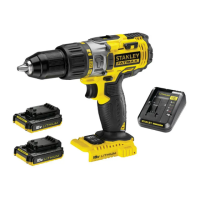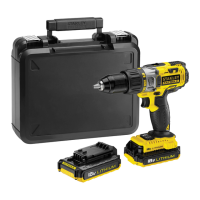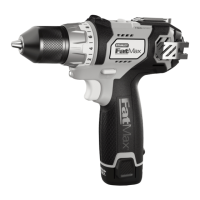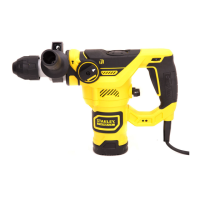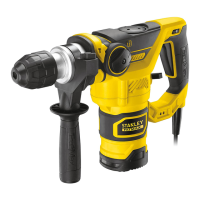The green LED will ash indicating that the battery is being
charged.
The completion of charge is indicated by the green LED
remaining on continuously. The pack is fully charged and
may be used at this time or left in the charger
Warning! Recharge discharged batteries as soon as pos-
sible after use or battery life may be greatly diminished.
Charger diagnostics
This charger is designed to detect certain problems that can
arise with the battery packs or the power source. Problems
are indicated by one LED ashing in different patterns.
Bad Battery
The charger can detect a weak or damaged battery. The
red LED ashes in the pattern indicated on the label. If you
see this bad battery blink pattern, do not continue to charge
the battery. Return it to a service centre or a collection site
for recycling
Hot/Cold Pack Delay
When the charger detects a battery that is excessively
hot or excessively cold, it automatically starts a Hot/Cold
Pack delay, suspending charging until the battery has
normalised. After this happens, the charger automatically
switches to the Pack Charging mode. This feature ensures
maximum battery life. The red LED ashes in the pattern
indicated on the label when the Hot/Cold pack delay is
detected.
Problem Power Line
When the charger is used with some portable power
sources such as generators or sources that convert DC
to AC, the charger may temporarily suspend operation.
The LED ashes in the pattern indicated on the label. This
indicates that the power source is out of limits.
Leaving the battery in the charger
The charger and battery pack can be left connected with the
LED glowing indenitely. The charger will keep the battery
pack fresh and fully charged.
Important charging Notes
u Longest life and best performance can be obtained if
the battery pack is charged when the air temperature is
between 65°F and 75°F (18°- 24°C). DO NOT charge the
battery pack in an air temperature below +40°F (+4.5°C),
or above +105°F (+40.5°C). This is important and will
prevent serious damage to the battery pack.
u The charger and battery pack may become warm to touch
while charging. This is a normal condition, and does not
indicate a problem. To facilitate the cooling of the battery
pack after use, avoid placing the charger or battery pack
in a warm environment such as in a metal shed, or an
uninsulated trailer.
u If the battery pack does not charge properly:
u Check current at receptacle by plugging in a lamp or
other appliance.
u Check to see if receptacle is connected to a light switch
which turns power off when you turn out the lights.
u Move charger and battery pack to a location where the
surrounding air temperature is approximately 65°F -
75°F (18°- 24°C). d. If charging problems persist, take
the tool, battery pack and charger to your local Stanley
Fat Max service center.
u The battery pack should be recharged when it fails to
produce sufcient power on jobs which were easily done
previously.
u DO NOT CONTINUE to use under these conditions. Fol-
low the charging procedure.
u You may also charge a partially used pack whenever you
desire with no adverse affect on the battery pack.
Installing and Removing the Battery Pack from the
tool
Warning! Make certain the lock-off button is engaged to
prevent switch actuation before removing or installing battery.
To install battery pack
u Insert battery pack rmly into tool until an audible click is
heard as shown in gure A. Ensure battery pack is fully
seated and fully latched into position.
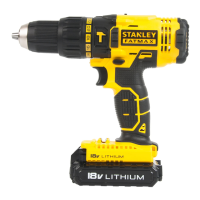
